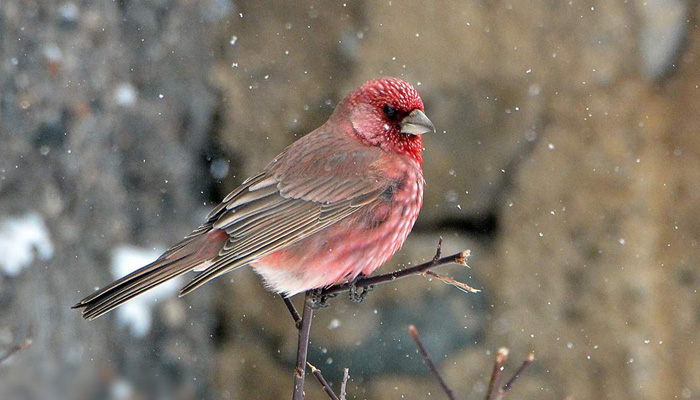
English: Great Rosefinch, Caucasian Great Rosefinch
Russian: Большая чечевица
Mongolian: Улаан бужмар
German: Berggimpel
French: Roselin tachete
Japanese: シロボシマシコ (Shiroboshi-mashiko)
Body
length:19-20
½ cm.
Alpine species breeding on bare mountains at above 2500 m (usually above
3000 m), preferably close to glaciers, on sunny, boulder-strewn slopes with
grass and supply of seeds of dandelions. Resident, but in winter descends to c.
1000m or lower depending on snow situation; then seen in small flocks, and
rather mobile. As a rule shy, difficult to approach. Late nester, often not
incubating until end Jul. Nests in rock crevice or under boulder.
Identification: Bi
as Pine Grosbeak, and similarly stocky. Bill heavy. Wings and tail rather long.
Flight deeply undulating over longer stretches. Plumage quite dark, which
together with size and manner of flight can at distance give thrush-like
impression.
- Adult ♂: Dark
raspberry-red sprinkled with fine white sports on crown and underparts. Rather
swarthy on lores and around eye, giving ‘stern’ facial expression. Rear swarthy
on lores and around eye, giving ‘stern’ facial expression. Rear cheeks have
pinkish-white lustre. Bill rather pale, yellowish-grey.
- ♀/1st summer ♂:
Entirely brownish-grey (no red) and heavy streaked dark; lores, eye region and
forecheeks fairly dark. Biil grey-brown.